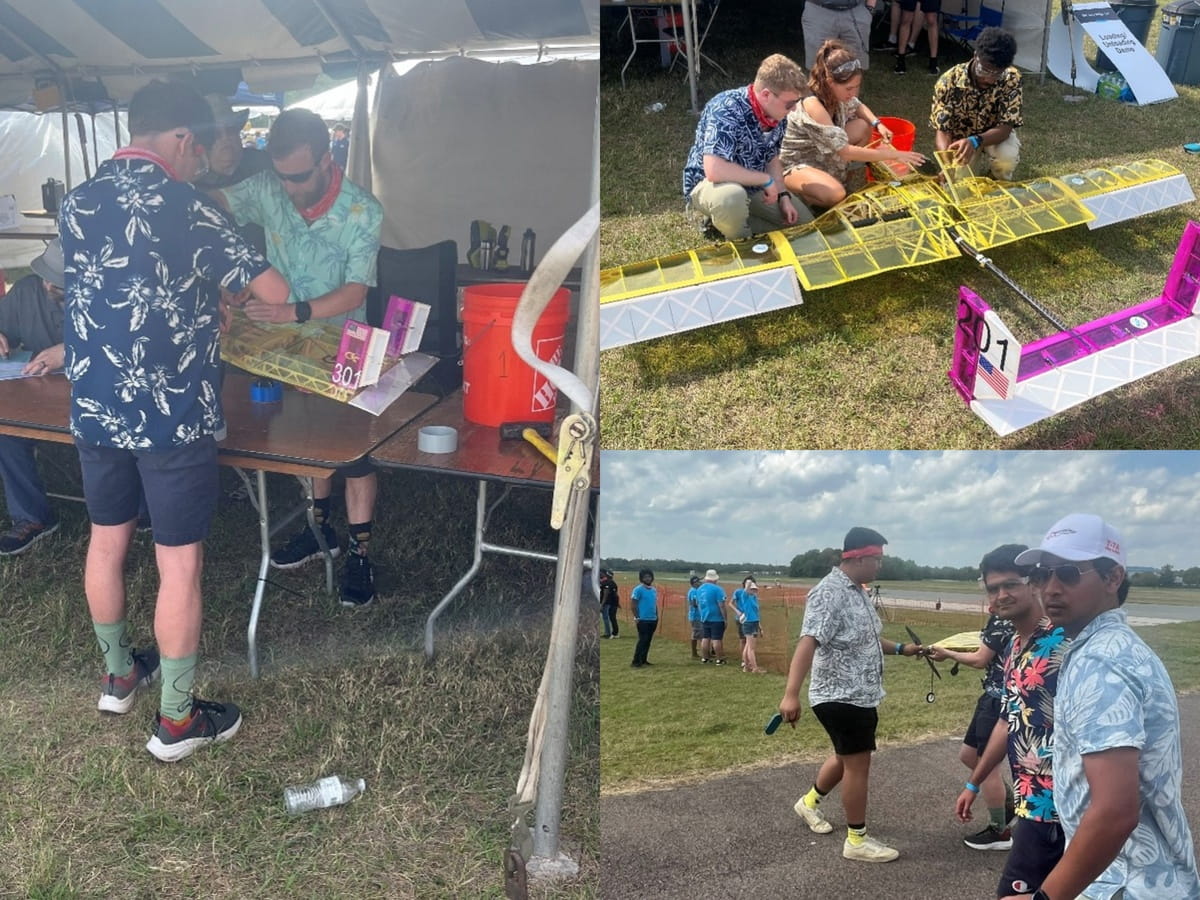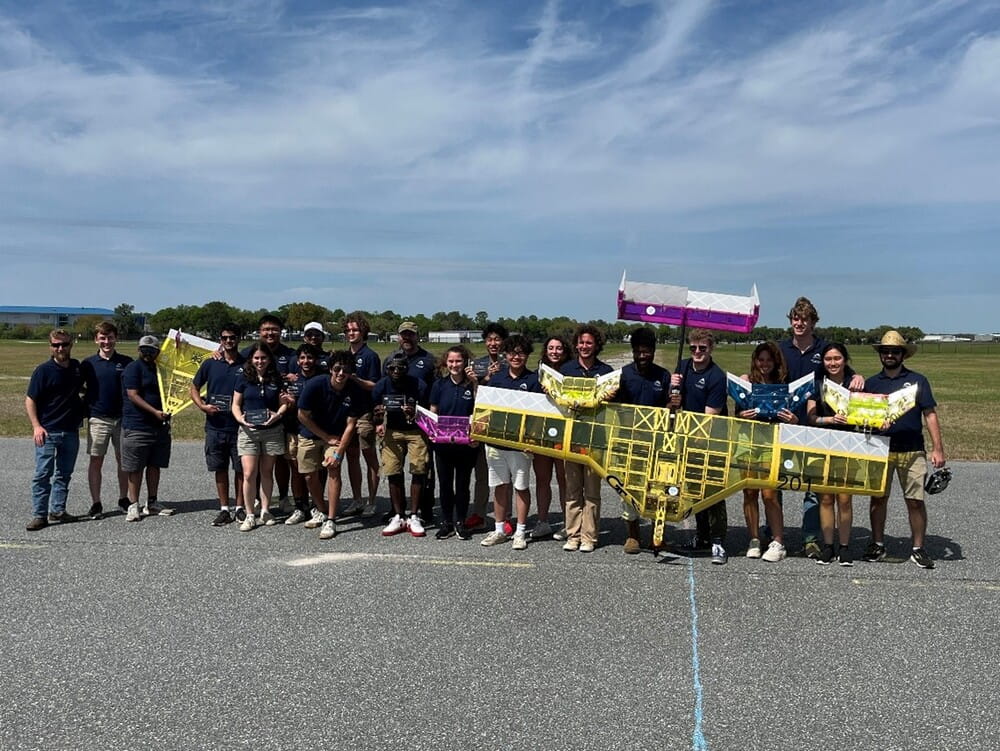
Georgia Tech Team Takes Top Spots at SAE Aero Design Competition
Georgia Tech Team Takes Top Spots at SAE Aero Design Competition

The Georgia Tech Design Build Fly team returned home as winners from the SAE Aero Design East competition, which was held 8-10 March in Lakeland, FL. The team bested over 55 teams from across the United States and the world, including Poland, Brazil, China, India, and Mexico.
In Micro class, the Georgia Tech team took first place overall, first in design report, second in presentation, and first in flight performance. The Micro class requires an aircraft that can take off from a runway in a short distance, be as light as possible, carry as much water as possible, and have a small wingspan while using 450 Watts of electric power for propulsion. The Georgia Tech team has taken first place in the Micro class five times in a row and for 9 out of the last 10 years in this competition.
In the Advanced class, the team took first place overall, second in presentation and first in flight performance. The Advanced class rules are highly complex, with many different parts. First, there is a primary aircraft limited to a 10 ft wingspan and 750 Watts of electric power for propulsion. It has to carry water, have a data system to communicate with a ground station, and carry a smaller aircraft. The smaller aircraft is limited to 1 lb of weight and must be dropped from the primary aircraft at least 200 ft away and below 50 ft in altitude from a target, and then autonomously navigate to that target location. The drop must be commanded and recorded by a separate ground station that communicates data with both aircraft and helps the ground station operator to verbally guide the pilot of the primary aircraft to the correct location to drop. GT has taken 1st place in the Advanced class two years in a row and for 9 out of the last 10 years.
“We are proud that the Georgia Tech team has done so well in this competition over the last 10 years.” said Regents Professor Dimitri Mavris. “This is a great achievement and a testament to the club and its advisor, Research Engineer Carl Johnson. Competitions like this are important because provide students with real-life engineering challenges that complement what they learn through our curriculum, both in terms of academics and teamwork,” continued Mavris.
Pictured from left to right: Conor Thiels, Michael Francesconi, Deep Patel, Salil Sodhi, Cayetana Salinas, Martin Xiao, David Shaji, Vedant Ruia, Ethan Correa, Avery Truax, Ba Musa Khan, Carl Johnson (Club Technical Advisor), Kaci Wadsworth, Albert Lee, Cuong Nguyen, Natalia Garcia, Ryan Warner, Tilahta Agbere, Ira Rosner, Malia Trask, Phillip Clendenin, Nicole Nguyen, and Max Kramer

